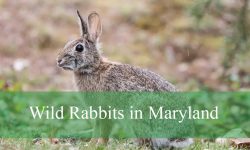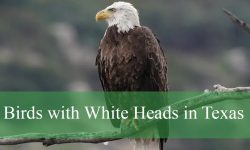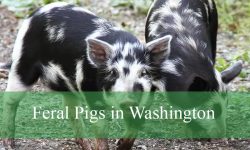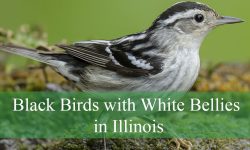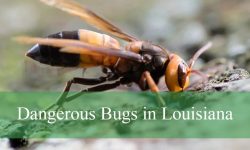Falcons bring speed, precision, and drama to the skies of Utah. These raptors are built for hunting with their pointed wings, sharp talons, and incredible eyesight. From the tiny kestrel to the powerful peregrine, falcons stand out as some of the most skilled aerial hunters in the region.
Utah’s landscapes provide excellent habitat for falcons, ranging from desert canyons and open rangelands to wetlands and mountain foothills. Some species live here year-round, while others visit during migration or winter, making the experience of spotting them even more rewarding.
In cities like Salt Lake, as well as remote wilderness areas, falcons can often be observed diving for prey or perching on high cliffs and tall structures. Their adaptability, hunting style, and beauty make them unforgettable to anyone lucky enough to watch them in flight.
Different Types of Falcons Found in Utah
American Kestrel (Falco sparverius)

The American Kestrel is the smallest falcon in North America, measuring about 8–12 inches in length with a wingspan of 20–24 inches. Males display rusty backs and tails with slate-blue wings, while females are more uniformly brown and streaked. Their small stature and quick, shallow wingbeats make them highly maneuverable hunters in open spaces.
This species is one of the most common falcons in Utah and can be found in deserts, farmlands, meadows, and suburban areas. They often perch on wires or fence posts, scanning the ground for movement before swooping down. Unlike larger falcons, they rely heavily on insects like grasshoppers and dragonflies, though they also take rodents and small birds.
A unique trait of kestrels is their ability to hover in midair while hunting. They face into the wind, beating their wings rapidly to stay in place before diving onto prey. This behavior, combined with their bold colors, makes them relatively easy to identify in the field.
Although widespread, kestrel populations have declined due to habitat loss and fewer nesting cavities. Bird enthusiasts in Utah often help by putting up nest boxes. A fascinating fact is that kestrels can see ultraviolet light, which helps them detect rodent urine trails, giving them a major advantage when locating prey.
Merlin (Falco columbarius)
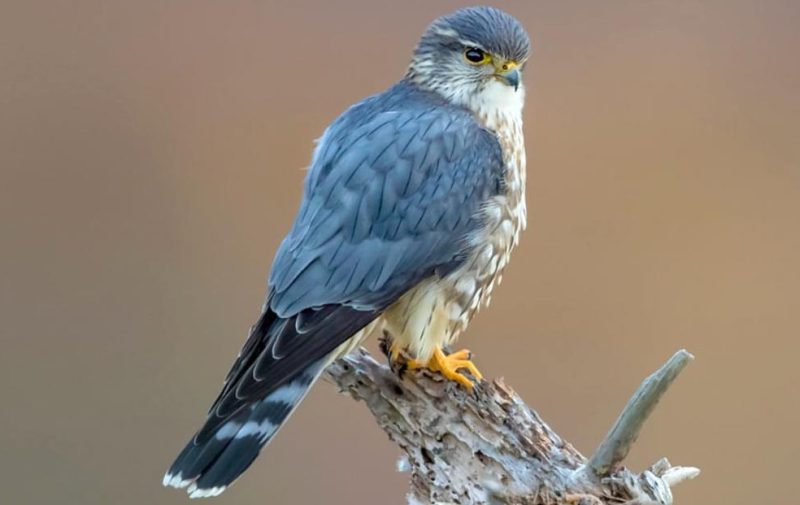
The Merlin is a small but powerful falcon, typically 9–12 inches long with a wingspan of 20–26 inches. Unlike the colorful kestrel, Merlins have darker, streaked plumage, often brown or gray depending on the subspecies. Their compact build and rapid, powerful wingbeats give them a determined flight style that stands out in Utah skies.
These falcons are most often seen in Utah during migration and winter months. They prefer open areas, grasslands, and forest edges, where they pursue flocks of small songbirds. Instead of hovering like kestrels, Merlins rely on speed and direct chases, sometimes flying low to the ground before suddenly rising to strike.
Merlins are fearless hunters, sometimes targeting prey nearly their own size. In Utah, they can be spotted near wetlands, agricultural fields, or city parks where small birds gather. Their direct and relentless pursuit style makes them one of the most exciting falcons to watch.
Historically, Merlins were trained in falconry, especially by noblewomen in medieval Europe. In North America, they are known for adapting well to urban environments during migration. A fun fact is that these falcons were once called “pigeon hawks” due to their size and resemblance in flight.
Prairie Falcon (Falco mexicanus)
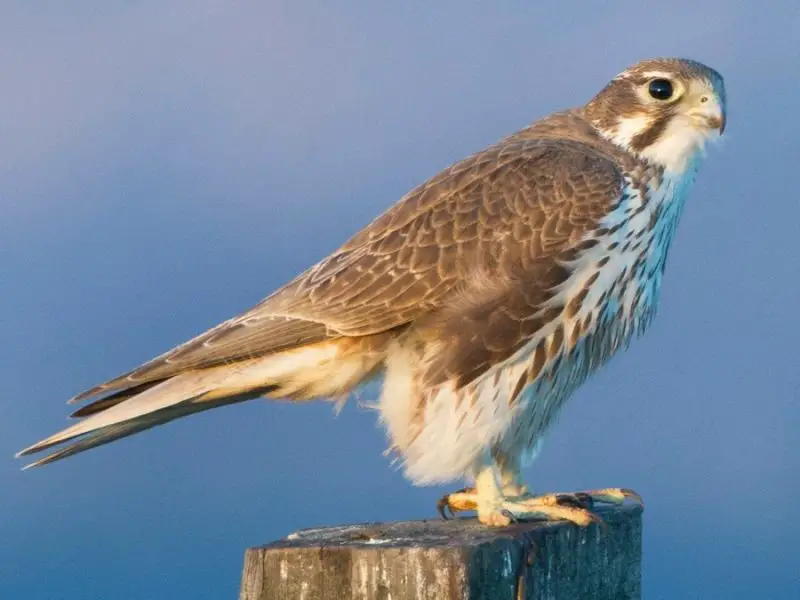
The Prairie Falcon is a medium-to-large falcon, measuring 15–18 inches long with a wingspan of 35–44 inches. It is slightly smaller than a Peregrine Falcon but lighter in build. Its pale underside and dark “armpit” markings under the wings are key field marks. The back and crown are a brownish-gray, blending well with Utah’s rocky desert terrain.
This falcon is a year-round resident in Utah and is especially associated with wide-open desert landscapes, cliffs, and canyons. They prefer open hunting grounds where they can soar effortlessly in search of prey. Their diet consists mostly of ground squirrels, small mammals, and birds, which they strike with swift, calculated attacks.
Prairie Falcons often nest on cliff ledges and rocky outcrops, making Utah’s canyon country a perfect stronghold for them. They defend their territories aggressively, often chasing away larger raptors such as Red-tailed Hawks or Golden Eagles. Their adaptability allows them to thrive in Utah’s arid conditions.
One remarkable fact about Prairie Falcons is their ability to withstand extreme environments, from scorching desert basins to mountain foothills. Birdwatchers in Utah consider them a prized sight, as they embody the rugged beauty of the state’s wildlands.
Peregrine Falcon (Falco peregrinus)
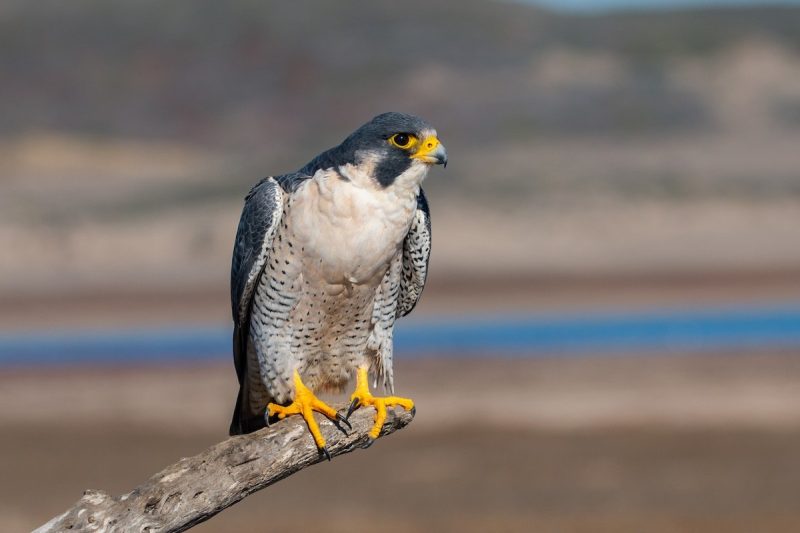
The Peregrine Falcon is one of the most iconic raptors in the world, measuring 14–19 inches long with a wingspan of 37–43 inches. It is instantly recognizable by its blue-gray back, barred white underside, and bold dark helmet-like markings on the head. Its long, pointed wings and muscular body are built for incredible speed.
In Utah, Peregrines can be found nesting on high cliffs, canyon walls, and increasingly on tall urban buildings. They specialize in hunting birds, which they catch in midair after a spectacular dive called a stoop. During these dives, they can reach speeds of over 200 miles per hour, making them the fastest animal on Earth.
Peregrine Falcons nearly went extinct in the mid-20th century due to pesticide poisoning, particularly from DDT. Thanks to conservation programs, including reintroductions in Utah, their populations have made a strong recovery. Today, they are a symbol of wildlife resilience.
Falconers have valued Peregrines for centuries because of their unmatched hunting ability. In Utah, spotting one on a canyon wall or soaring above Salt Lake City is a thrilling experience. A fascinating fact is that Peregrines are found on every continent except Antarctica, making them truly global raptors.
Gyrfalcon (Falco rusticolus)
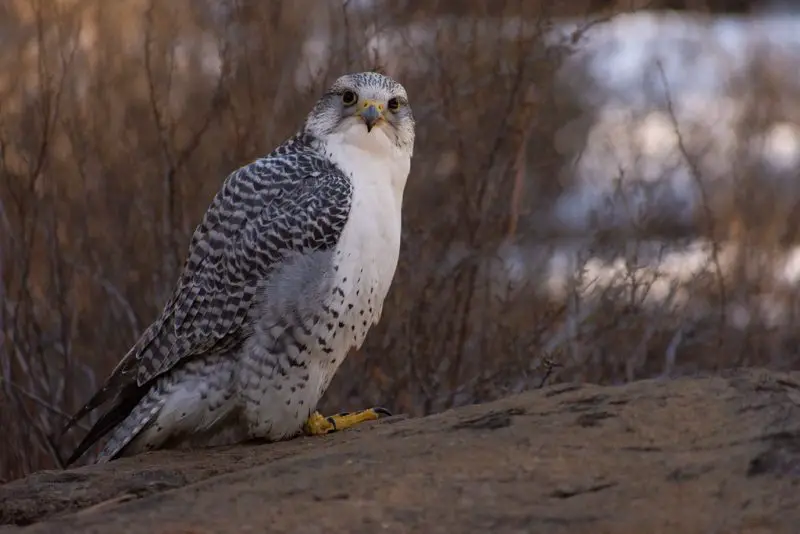
The Gyrfalcon is the largest falcon in the world, reaching 19–24 inches in length with a wingspan of 43–63 inches. It is a rare winter visitor to Utah, usually appearing in open areas during the coldest months. Its plumage varies from nearly all white to dark gray, with striking patterns that make each bird look unique.
These powerful raptors are built for endurance and strength rather than sheer speed. In Utah, they are occasionally spotted in wide-open valleys or near wetlands, where they prey on ducks, grouse, and large birds. Their hunting style involves long pursuits, often using relentless chases rather than sudden dives.
Because Gyrfalcons breed in the Arctic tundra, their presence in Utah is always a special event for birdwatchers. They migrate south only in harsh winters, making sightings irregular and highly prized. Their large size and heavy build set them apart from other falcons seen in the state.
Historically, white Gyrfalcons were considered the ultimate prize in falconry and were reserved for royalty in Europe and Asia. A fun fact is that Gyrfalcons can survive in some of the harshest climates on Earth, thriving in subzero Arctic conditions before occasionally visiting Utah.
Best Time and Places to See Falcons in Utah
Falcons can be observed in Utah throughout the year, but the best time depends on the species. American Kestrels and Prairie Falcons are year-round residents, so they can be seen in every season. Spring and summer are particularly good for watching kestrels hovering over fields or perched on fences, while Prairie Falcons are most active around desert cliffs and open rangelands during breeding season.
Merlins and Gyrfalcons are primarily winter visitors to Utah. Merlins can often be found in open fields, wetlands, or near city parks between October and March, chasing after flocks of small birds. Gyrfalcons, on the other hand, are rare but most likely to be spotted in northern Utah valleys or around Great Salt Lake wetlands during especially cold winters.
The Peregrine Falcon is best seen in spring and summer, when it nests on high cliffs and canyon walls. In urban areas like Salt Lake City, they may also be spotted around tall buildings, especially where pigeons are abundant. The peak time for witnessing their dramatic hunting dives is during migration seasons in spring and fall.
Overall, the best places to observe falcons in Utah include Antelope Island State Park, Great Salt Lake wetlands, Canyonlands and Arches National Parks, and the Wasatch Front cliffs. Open deserts, farmlands, and canyon edges provide the best opportunities, with early mornings and evenings being prime hours for falcon activity.
FAQs About Falcons in Utah
What kinds of falcons live in Utah?
Utah is home to five falcon species: the American Kestrel, Merlin, Prairie Falcon, Peregrine Falcon, and the rare winter visitor, the Gyrfalcon. Some, like the kestrel and prairie falcon, are year-round residents, while others appear only during migration or winter.
When is the best time to see falcons in Utah?
The best time depends on the species. American Kestrels and Prairie Falcons can be seen year-round. Merlins and Gyrfalcons are most common in winter, while Peregrine Falcons are more active in spring and summer when nesting. Migration seasons in spring and fall also increase sightings.
Where can I find falcons in Utah?
Falcons favor open landscapes and cliffs. Top spots include Antelope Island State Park, Great Salt Lake wetlands, Arches and Canyonlands National Parks, and the Wasatch Front cliffs. In urban areas, Peregrine Falcons may be seen around tall buildings, especially near pigeon populations.
How can I tell falcons apart from hawks in Utah?
Falcons generally have pointed wings, slender bodies, and faster wingbeats, while hawks have broader wings and slower, soaring flight. Falcons also tend to have bold facial markings, like the Peregrine’s dark “helmet” or the kestrel’s mustache marks. Size can also be a clue, as kestrels are much smaller than most hawks.
Are falcons in Utah dangerous to humans?
Falcons are not dangerous to people and generally avoid direct interaction. They may dive or call loudly if their nests are disturbed, but they pose no real threat. Instead, they are beneficial predators that help control rodent and bird populations across Utah.


